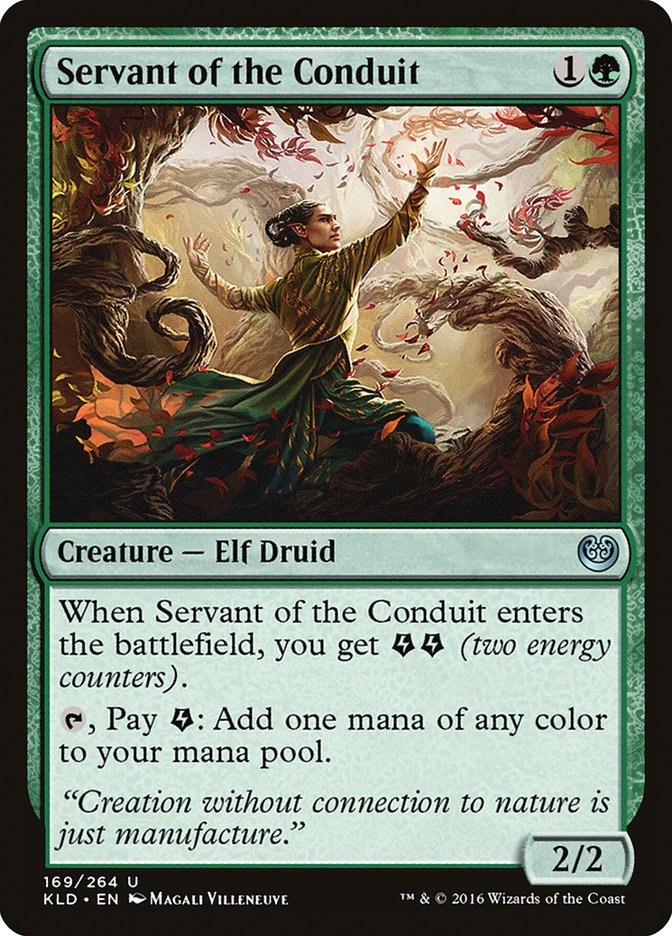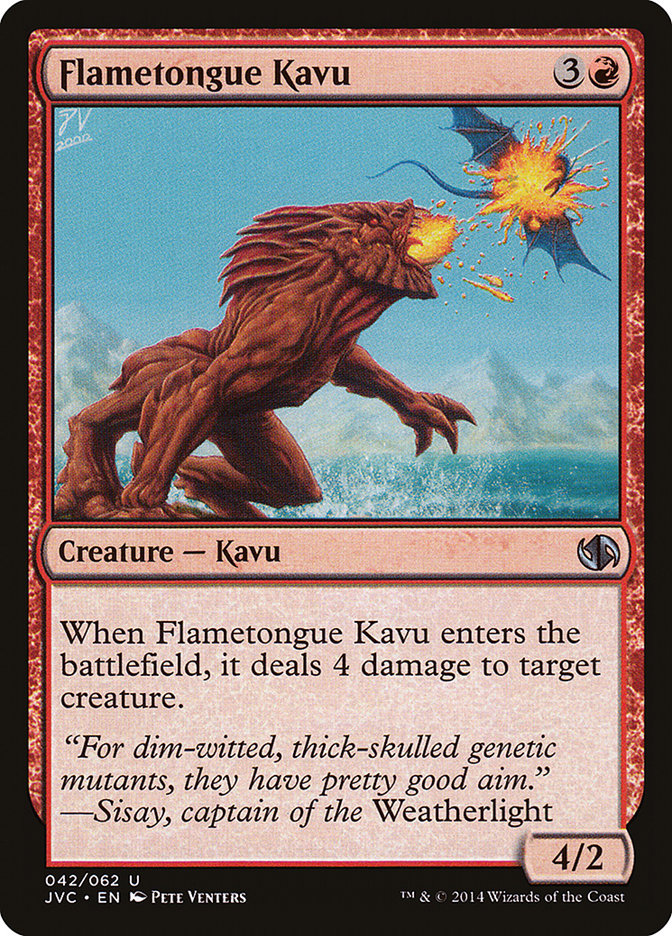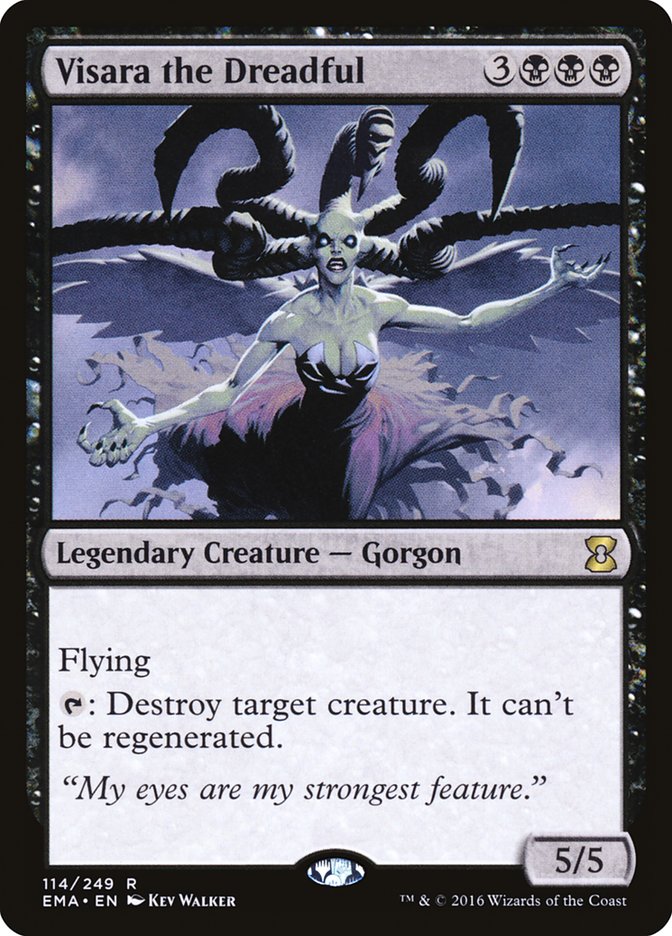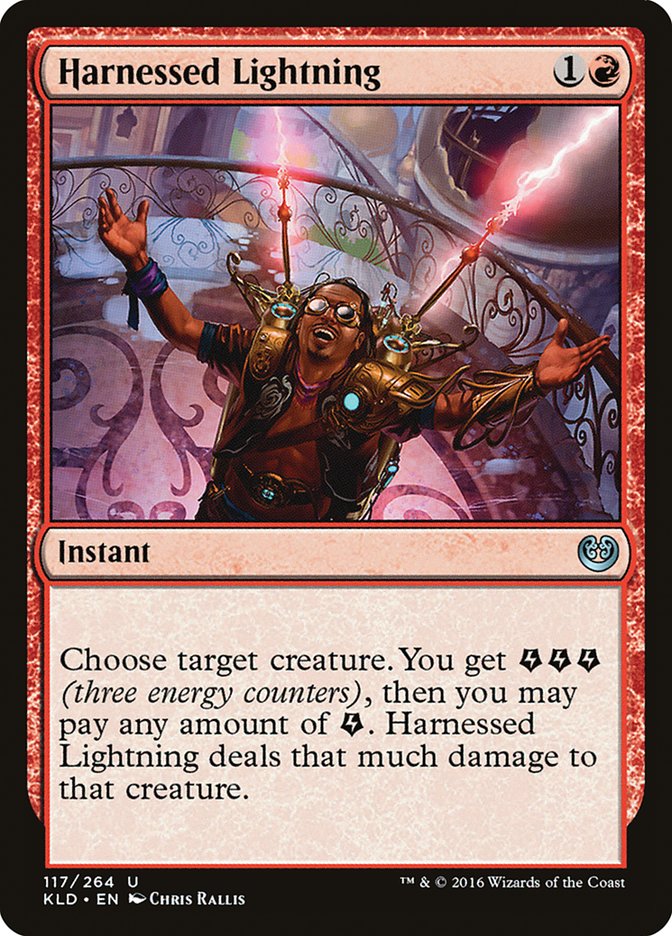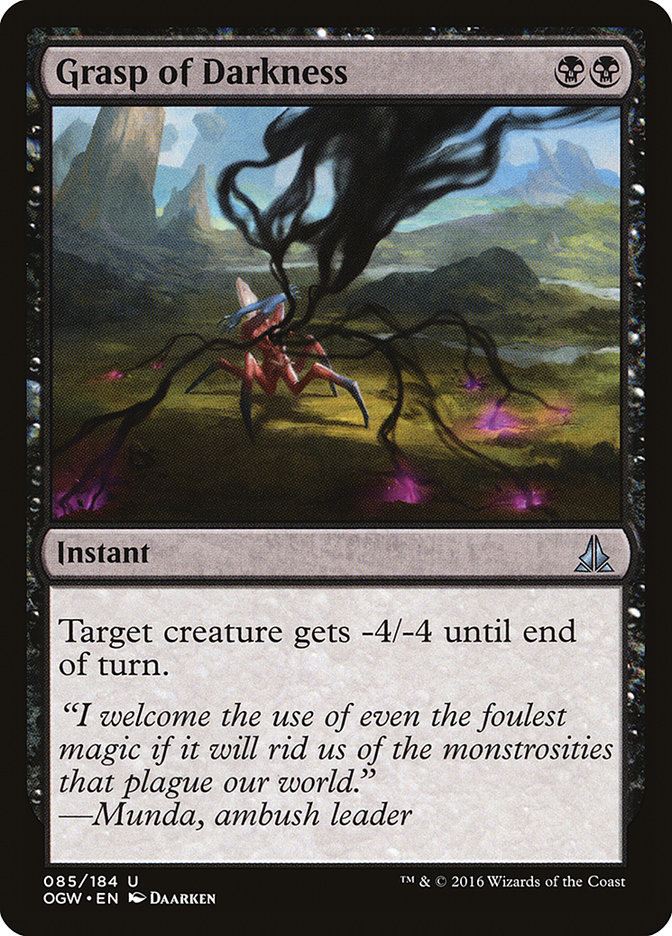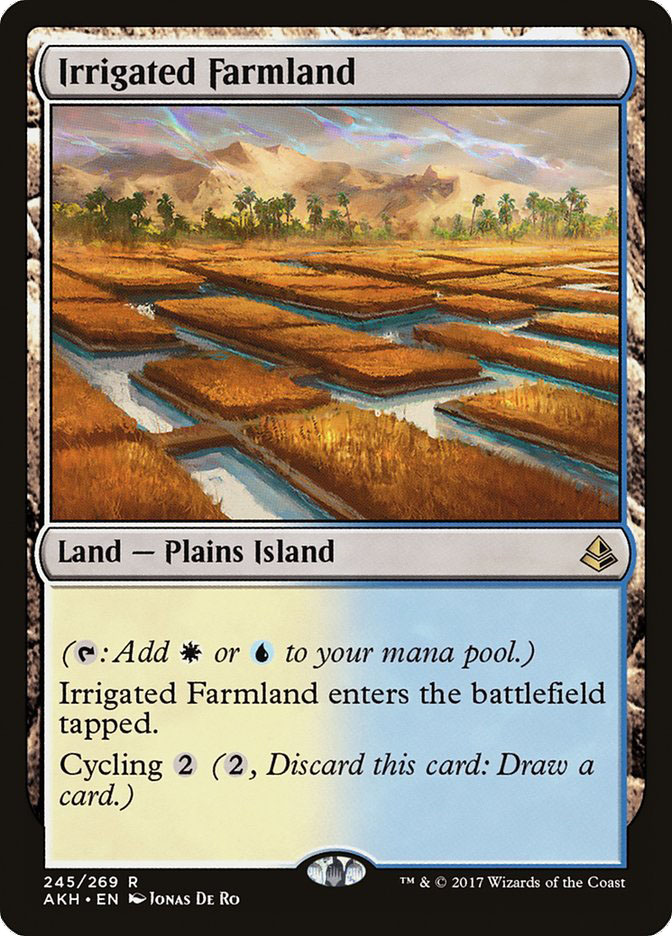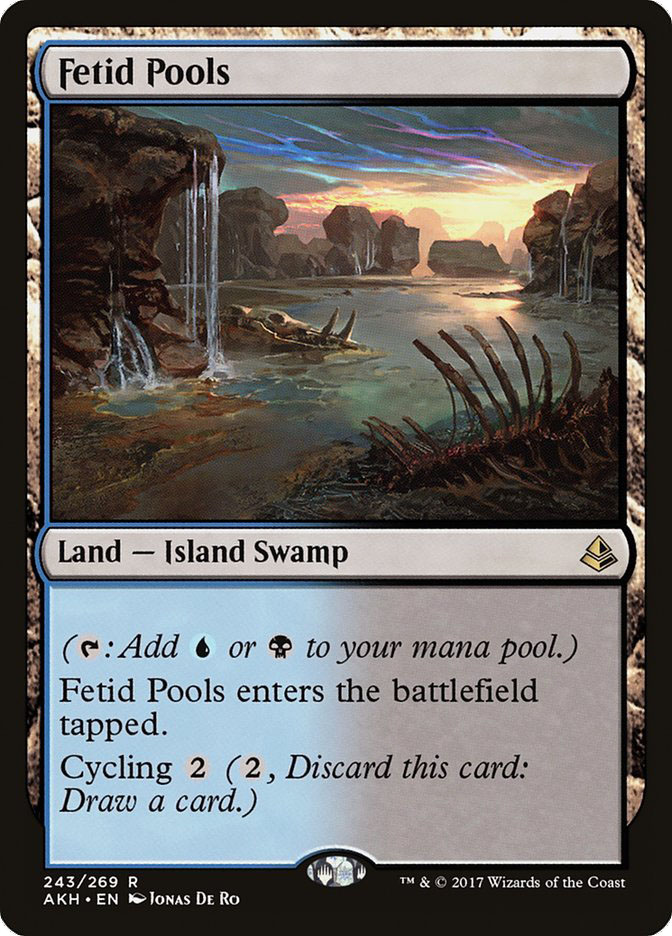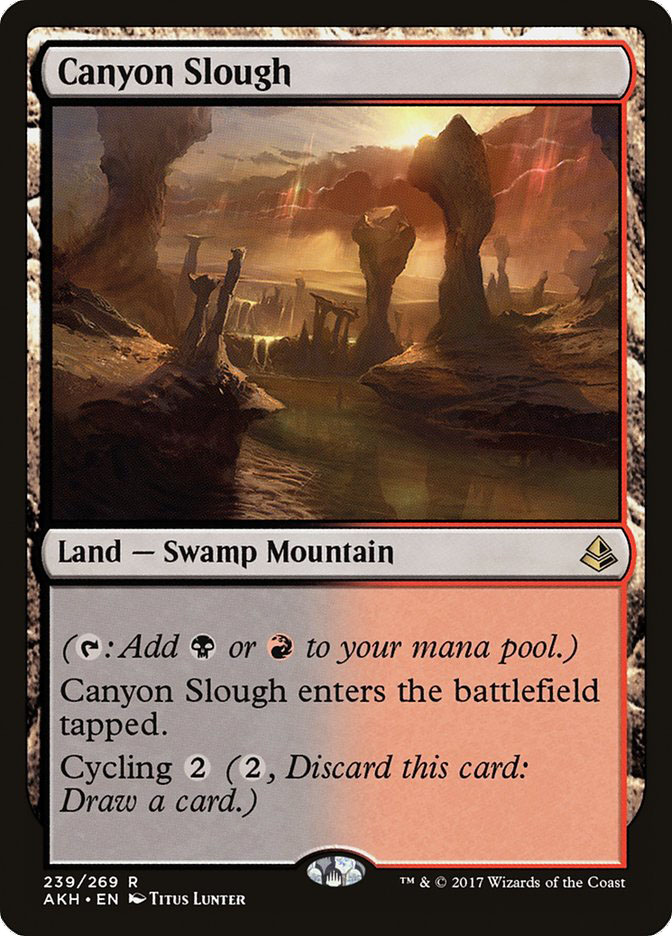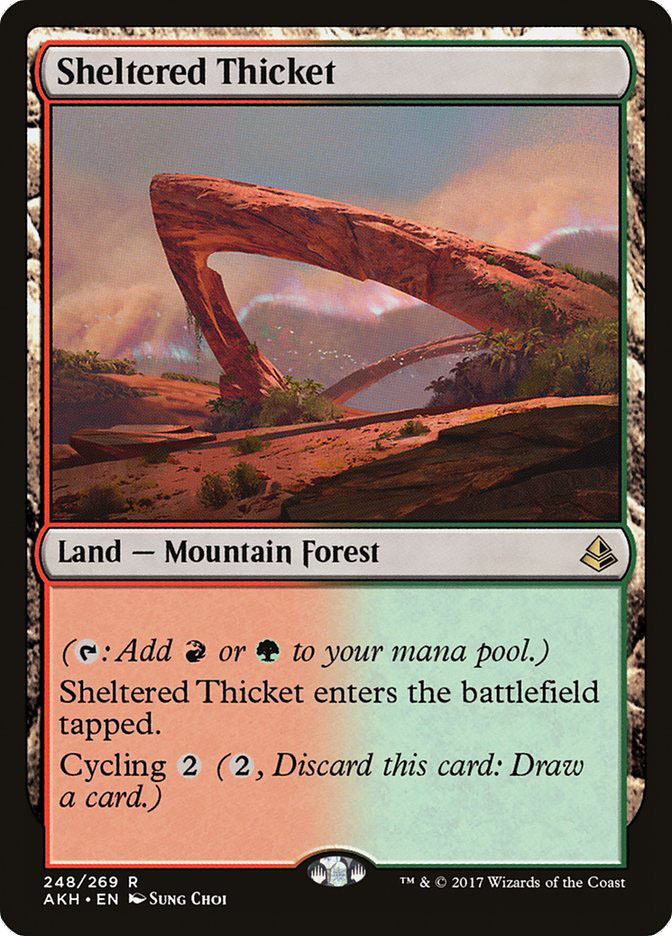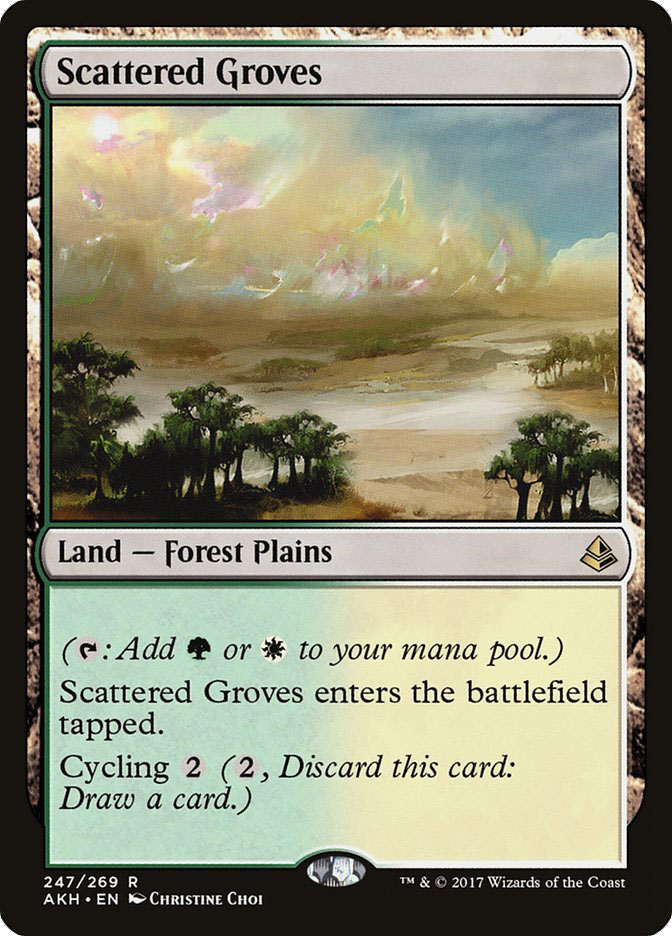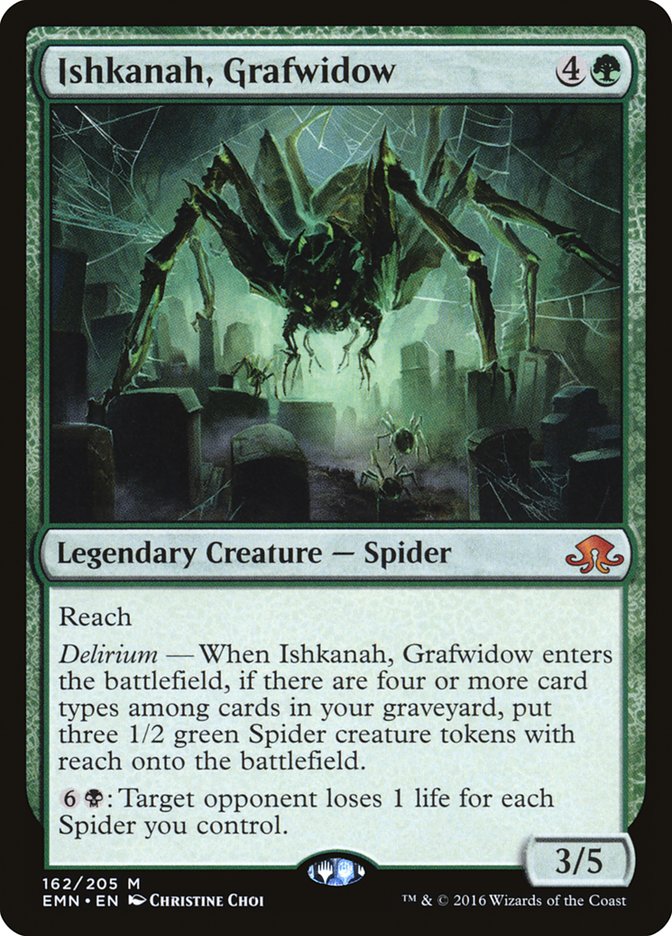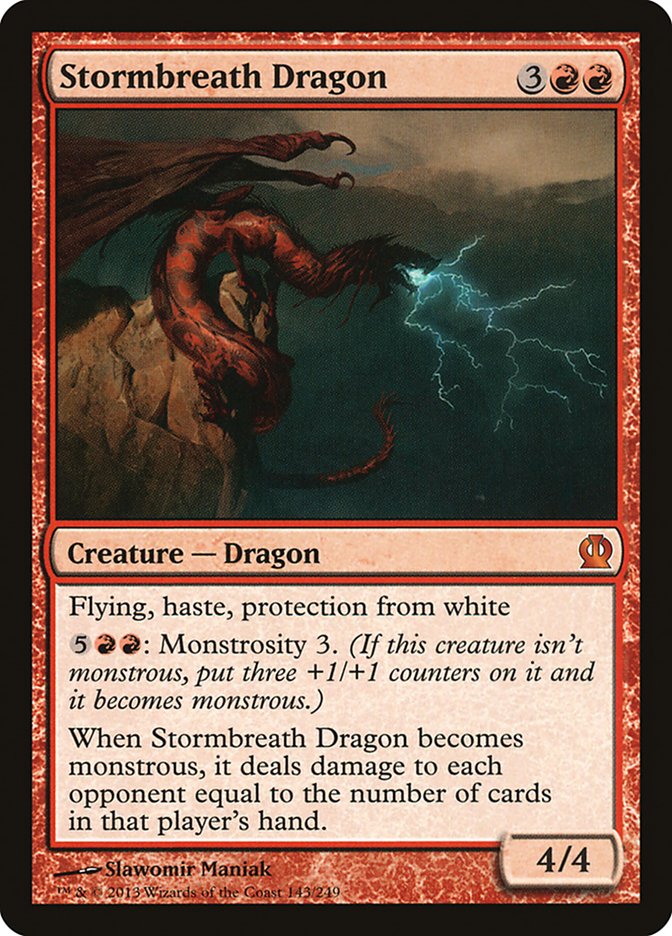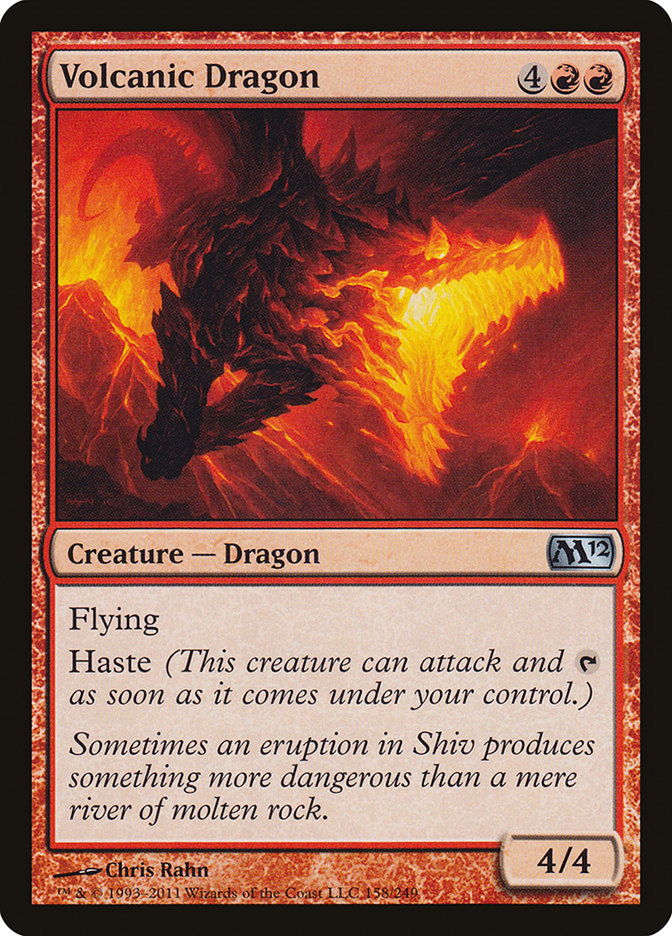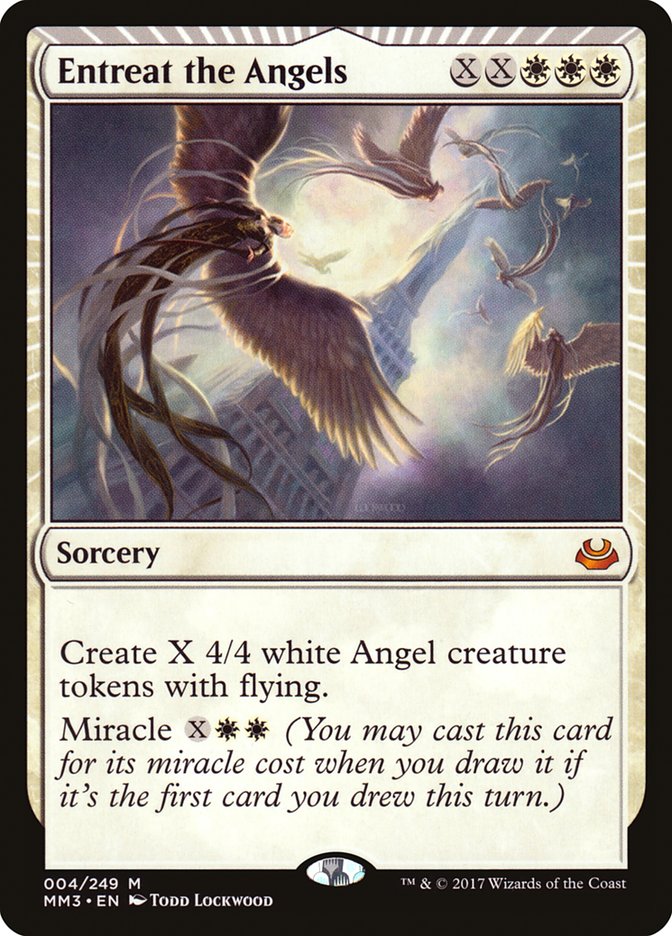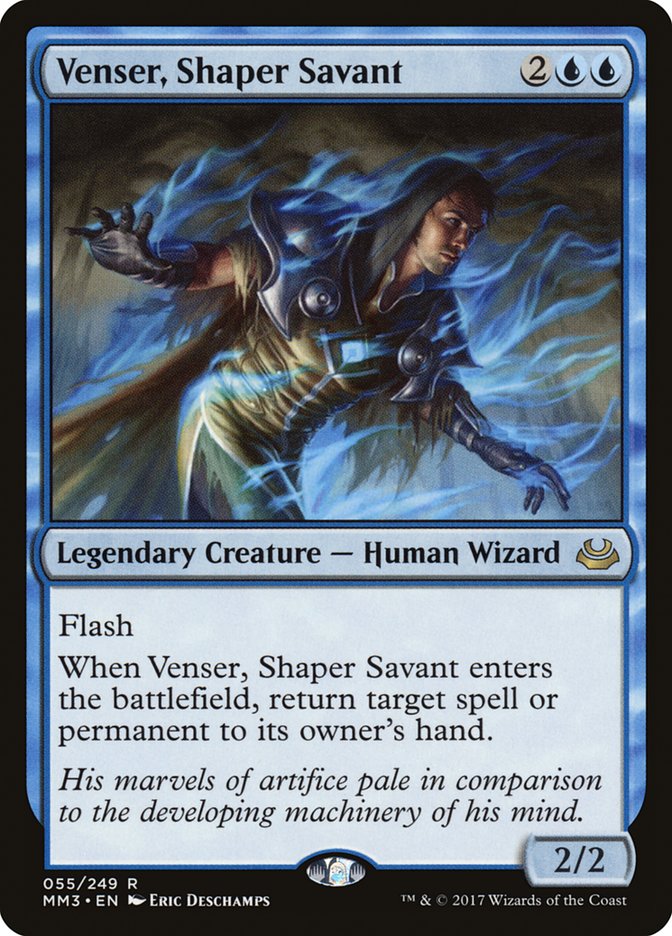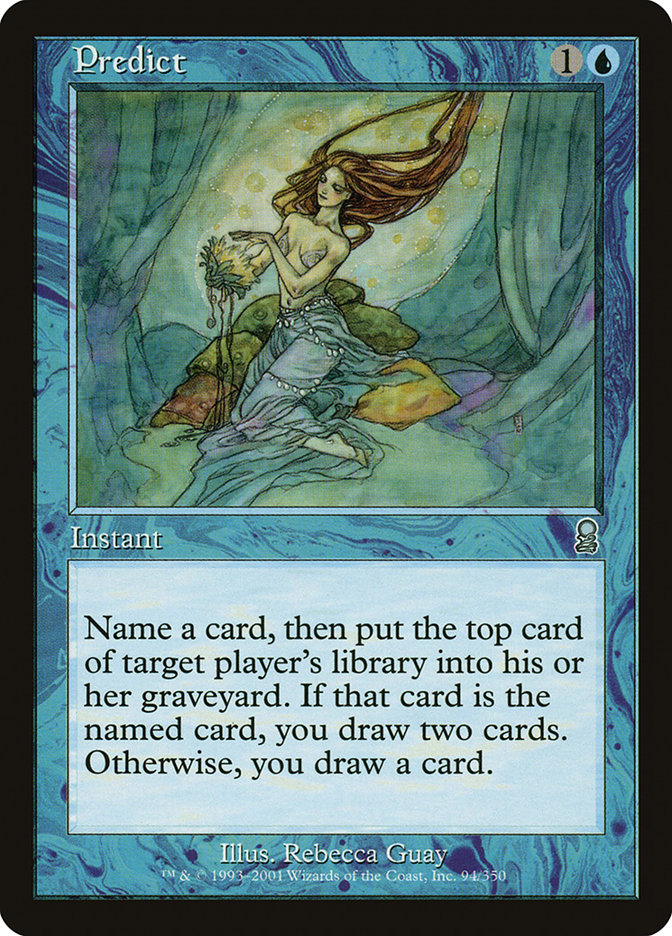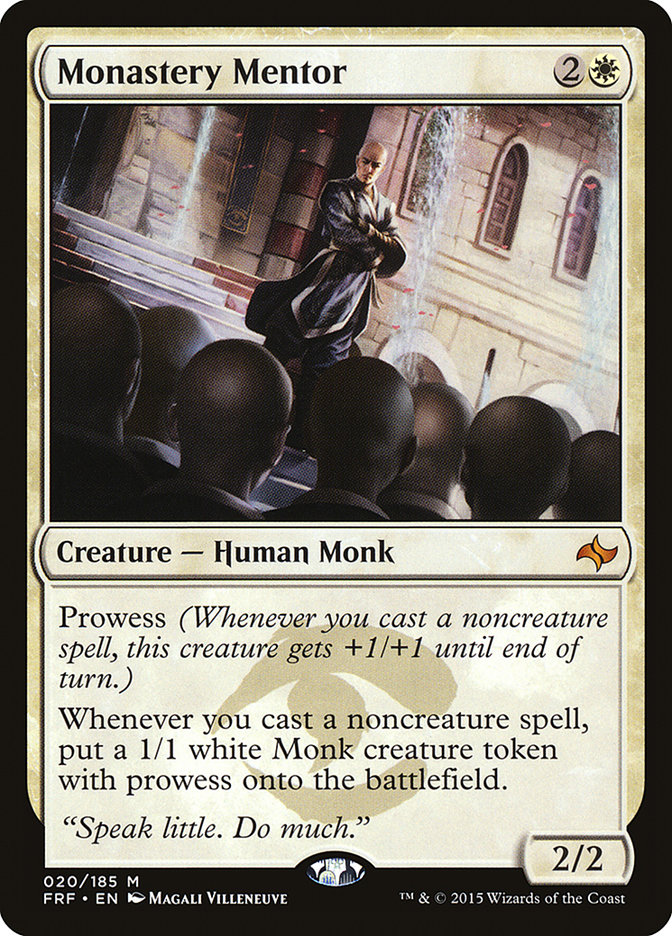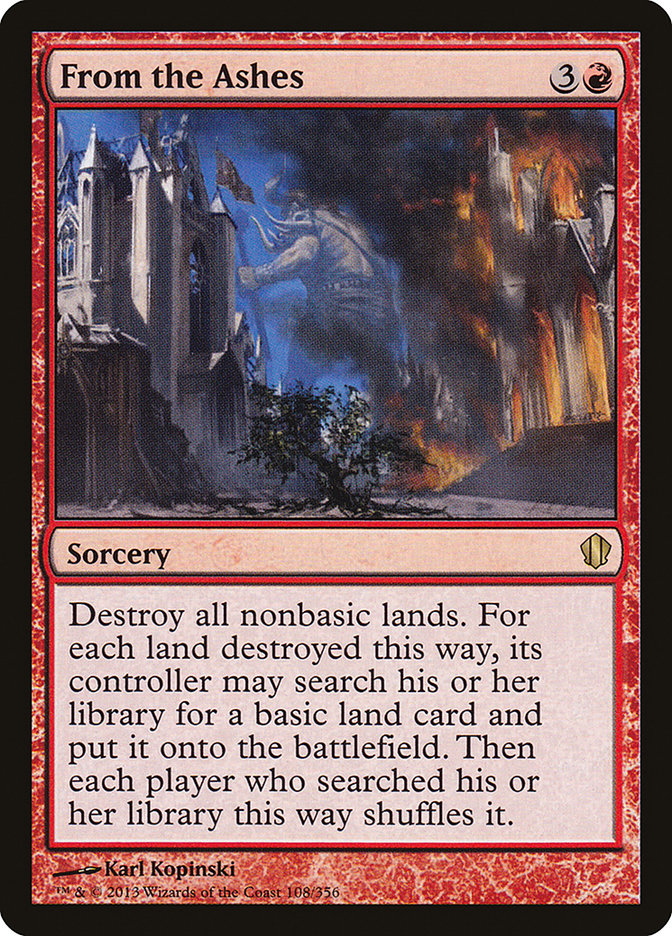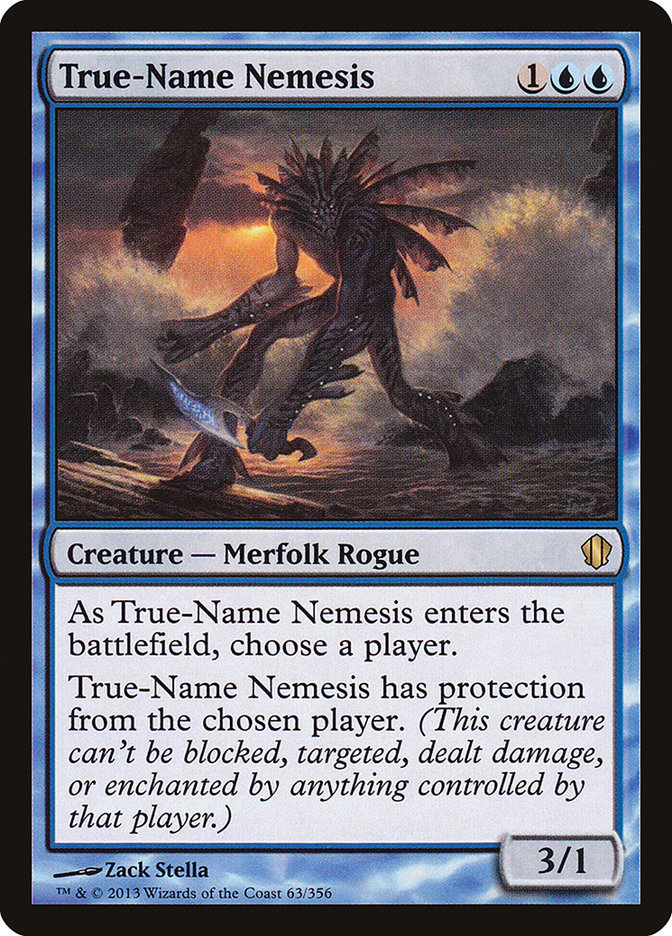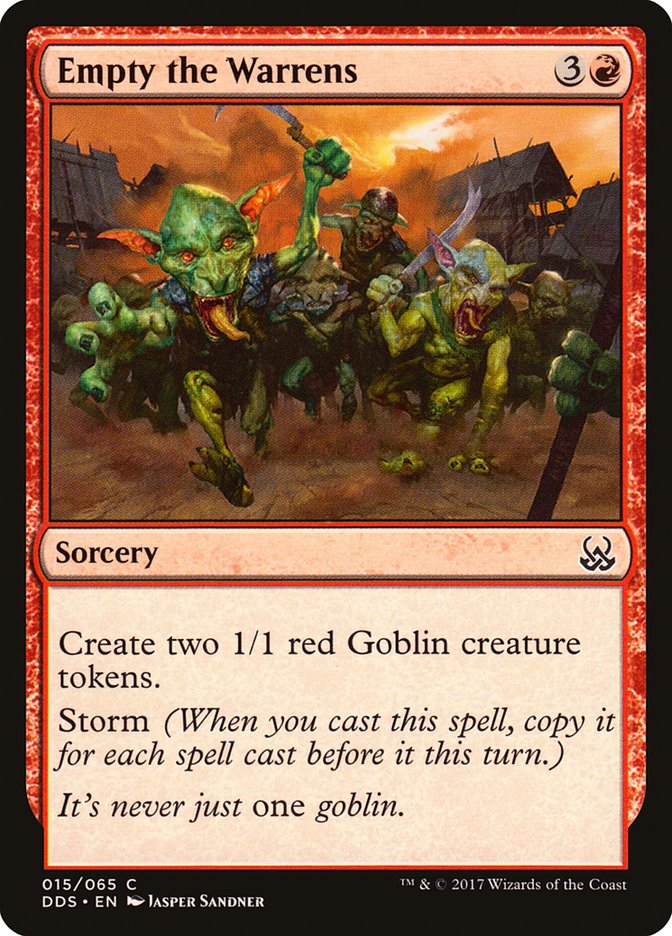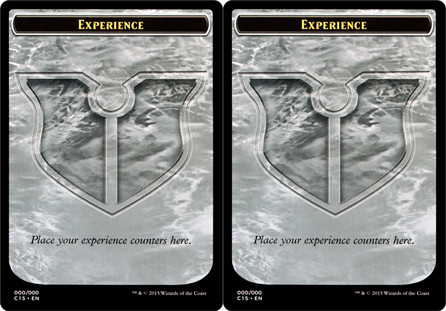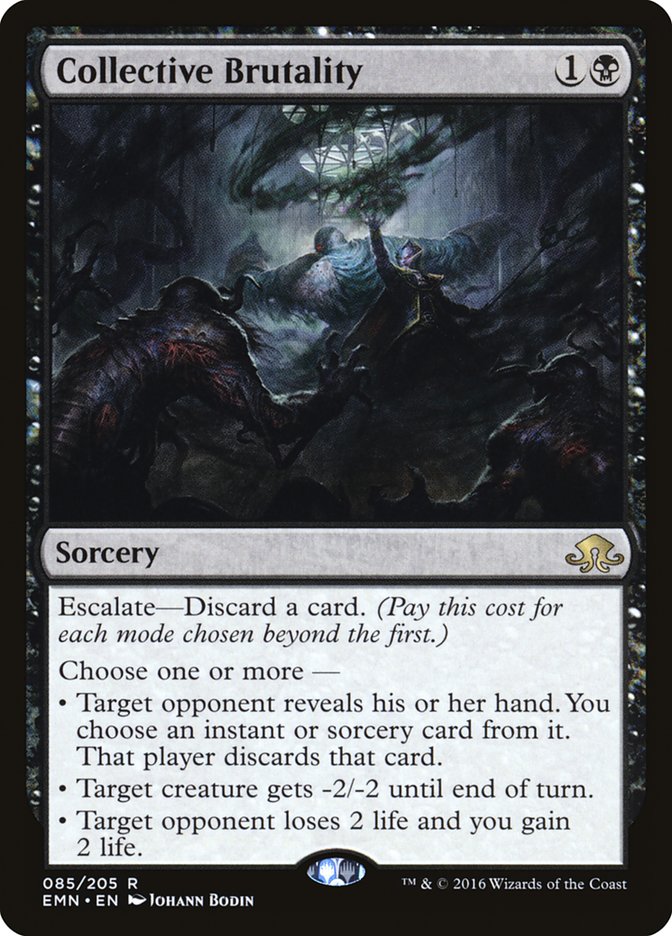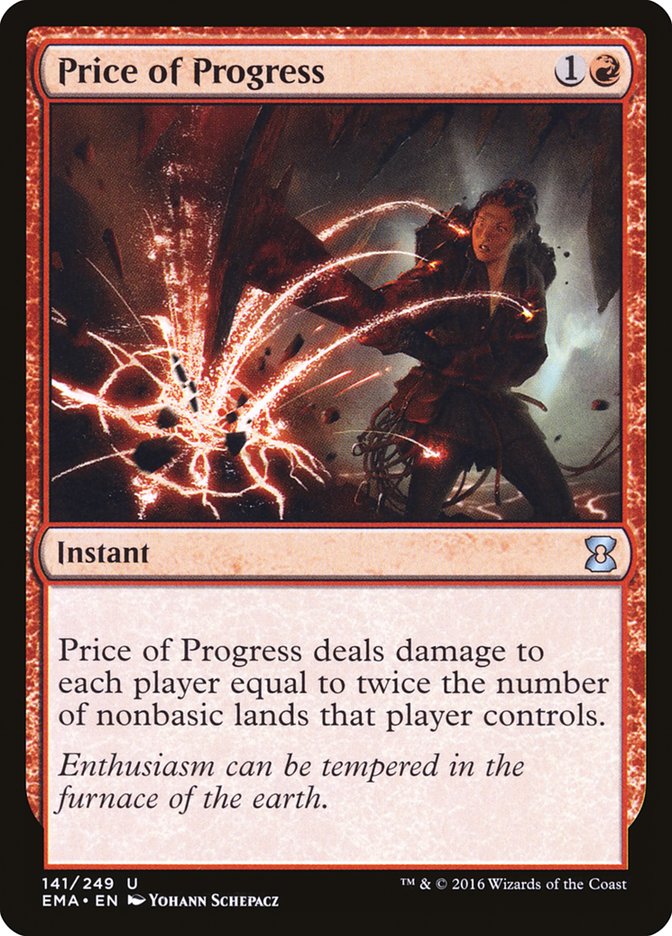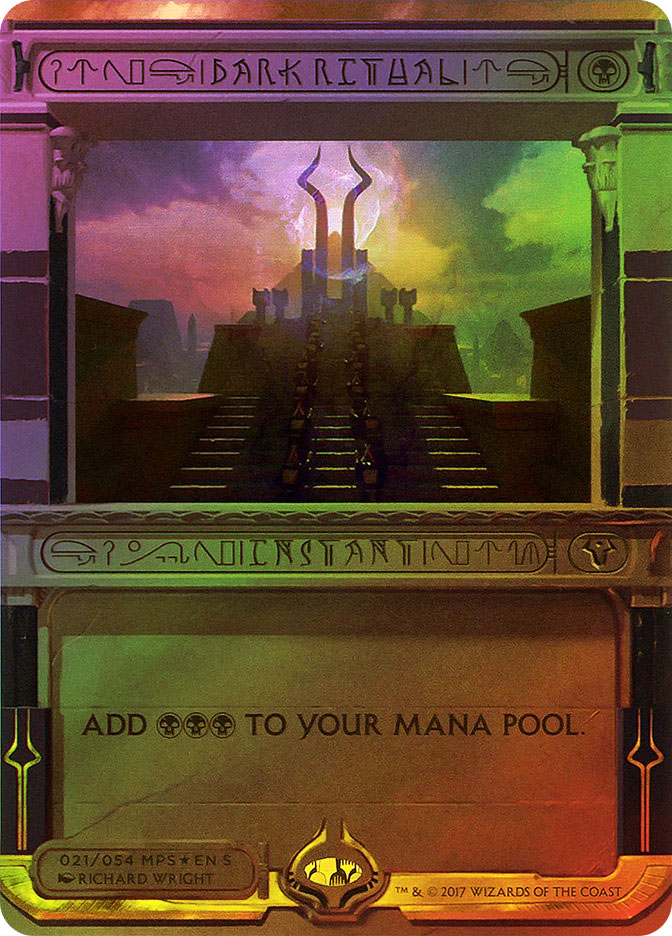This week we have a bit of a split in hot Magic topics: Amonkhet previews and Legacy at #SCGWOR. So…. why not both?
The Tyrant of Amonkhet
Pretty sure I could write a full article discussing deck building and game play implications of this card with 0 deck lists. Great design https://t.co/zDRvcR5Xv9
— Ari Lax (@armlx) March 27, 2017
Amonkhet previews are just starting, but I wouldn’t be surprised if my favorite card in the set was already known. Glorybringer is an absurdly well-designed Magic card, both on power level and play pattern. I might not hit a full article on the card this week, but I’m going to try and lay out all the amazing things it brings to the table.
Haste and flying make Glorybringer great against planeswalkers. Importantly, it is great against planeswalkers when you haven’t established threats, which is something Standard has lacked for the past few months. The other great thing about Glorybringer is that it answers a token-making planeswalker at true parity, specifically dealing four to Gideon, Ally of Zendikar and four to the Knight token. You can’t get that out of a Hero’s Downfall, no matter how you try.
The only mismatch of Dragon versus planeswalker has to do with timing. You want to slam your haste threat right when they tap out, both to attack without facing potential removal spells and to prevent them from getting multiple activations of value out of their card. I expect mana accelerants to go up in value to help break the “turn 4 Gideon versus turn 5 Glorybringer” gap on the draw, as well as allowing Glorybringer on the play to take out a turn 3 Saheeli Rai before it hits five loyalty. Servant of the Conduit is the current best option, but I’m sure we have a shot at something else of that caliber in the rest of Amonkhet.
But let’s get around to the rest of the text on the card. The big play with Glorybringer is going to be when it immediately kills a creature via exerting and sticks around. That mode is basically a Flametongue Kavu or Shriekmaw, except you get the first attack up front due to haste and wait a turn where it can’t block due to exert. The play pattern is going to be a bit different from those older cards, as Glorybringer can’t immediately block to trade and ensure a two-for-one, but it’s got its own style. As obvious as it sounds, Glorybringer is going to be working at killing a creature and the opponent at the same time for the same mana. It’s more Searing Blaze, less Kolaghan’s Command.
Keep in mind the Flame Slash effect is repeatable every other turn. I’m not sure how anyone ever beats that in Limited, and it isn’t much less threatening in Standard. Your opponent attacks with an unexerted Glorybringer and you don’t have a removal spell. Things aren’t going to get better if you try to cast a creature; it’s just going to die and you are down four life and a card with only a small window of exertion to try to rebuild. Not only is Glorybringer good from behind, it’s devastating when ahead.
Minor interaction of note: the damage is a separate trigger that occurs when you exert Glorybringer. If you target Walking Ballista, you have to exert your creature, the deal-four goes on the stack, and then they can shoot you with the Ballista counters. This is different from it saying, “You may exert this. If you do it deals four damage to target creature.” That would involve you making the decision to exert during the resolution of the ability, when it would be too late for them to fire off pings if you decided to kill their creature.
Much like against Flametongue Kavu, the big losers of Glorybringer existing are three- and four-cost creatures. Nothing in the Siege Rhino frame exists, so basically everything that costs less than five has less than five toughness. Tapping out for something that dies to Glorybringer in the same timeframe that they are casting Glorybringer leaves you open to getting freerolled for a card.
This is where things can get interesting. You have to actually attack with it to get the damage trigger. If Glorybringer dies in your beginning of combat step, it was just a five-drop do-nothing. Midrange creatures aren’t totally blanked by Glorybringer; you just need to have the removal spell to back them up. That of course involves getting the mana to cast both in the same turn. Inexpensive ways to kill Glorybringer will be at a premium, notably Harnessed Lightning and Grasp of Darkness. This ability for back-and-forth play is yet another reason Glorybringer is such an awesome design where Flametongue Kavu got a little oppressive.
This plan of “four-drop plus two-drop removal” gets a bit interesting with the new cycle of enters-the-battlefield-tapped cycling duals and in general all the land options in Standard. You are going to be in scenarios where you want your sixth land and want it to be untapped. The power of cycling duals is that you can reach that dream state of stopping on a certain number of lands and drawing all spells past that. Is six that number of lands you want to stop on, or is it lower? On the flip side, do the Kaladesh fastlands hinder your sixth untapped mana too much? Is waiting a turn for your land to untap even that big of a deal if they are holding their Glorybringer to line up with your creature? I don’t have a good answer yet, but this is the kind of thing you will need to think about going deeper into the format.
You can also play specific five-drops to compete with Glorybringer. Both Archangel Avacyn’s enters-the-battlefield trigger and Ishkanah, Grafwidow’s Spiders do good work against the 4/4 flying body of Glorybringer. Rotating five-drop battles are definitely a good thing, so another thumbs-up to Glorybringer.
Keep in mind that you aren’t obligated to use most of Glorybringer’s text box. It has four power and haste and flying. Your opponent will die if you just attack them. Stormbreath Dragon had a lot of extra text that added to the “kill you” plan, but often just repeated attacks for four were enough.
In the end, I expect Glorybringer to fit into one of two places in the metagame, and both are quite good. Either it is going to be crushing from the start, booting a segment of the card pool much like Walking Ballista did to Selfless Spirit. Once those free wins are gone, the card will be merely very good, but not insane. The other option is the format starts off too proactive for five-drops to be good, but once things slow down a bit and people start playing the right answers, Glorybringer will be a key breaker, much like the path Archangel Avacyn has followed in the wake of Aether Revolt. Given that Amonkhet is the plane of Nicol Bolas, having another Dragon crushing at the top tables is certainly feels right.
Legacy for SCG Worcester
Given the long-term nature of Legacy, I expect many people playing #SCGWOR to have already made their decision on what to play. However, if you are still waffling, these are the strategies I would endorse.
Deck #1: Miracles
Creatures (8)
Planeswalkers (2)
Lands (22)
Spells (28)

Last week, I made the claim that Miracles wasn’t the only viable deck to play in Legacy. Whether or not that is true, it is still the best deck. Still, I think you need to show up with the right list. Things I would emphasize this weekend:
Entreat the Angels is very, very good at overriding the card advantage people try to throw at you backed by Abrupt Decay. It’s even better than it used to be, as fewer decks have Stifle or Maelstrom Pulse to try and fight it. Playing zero is dumb.
Of the different versions, I think I’m most partial to the legendary creatures list. It’s oddly the most proactive and the best in the reactive mirror match due to Cavern of Souls. Vendilion Clique and Venser, Shaper Savant do good work against random things your answers might line up a little off against. Monastery Mentor does some of the garbage collection, but isn’t also an interactive spell, while Predict is just good at burying G/B/x decks and air against everyone else.
From the Ashes is great. Everyone is back to trying to beat Miracles with fair decks, and the best way to beat those is throw some single-card haymakers at them. Unfortunately, all of these fair decks are playing Wasteland where some used to skimp on it, so that card can’t be Elspeth, Sun’s Champion. Fortunately, everyone has gone crazy on their mana since Temur Delver died off, so you get a one-sided Armageddon that, unlike Ruination, lets you fetch duals in your setup to cast spells.
Deck #2: Sultai or Four-Color…Something
I spent some time messing around with the Four-Color Midrange deck, as did Jarvis Yu (once I stopped stealing his cards on Magic Online to record a video coming up later this week!), and we came to the same conclusion: the deck never kills people. This is the same problem every Baleful Strix deck ever has had and is the result of inbreeding to beat non-Miracles blue decks at the cost of percentage against everyone else.
I want to be playing something with a little more oomph to it, but still in the Sultai spectrum. The interactive cards are all good, but the ratios are just a bit off. These are a bit closer and have results, which is important, as I’m not sure my first-cut decklist wouldn’t be equally off the mark. Balancing these things is a bit fickle.
Creatures (15)
Lands (19)
Spells (26)

Creatures (15)
Planeswalkers (3)
Lands (21)
Spells (21)

I’ve listed a Delver deck, but I think Reid was onto something by not playing Delver. I would be experimenting somewhere between his list and the weird midrange lists. I like Snapcaster Mage and I like a couple of true card advantage spells like Hymn to Tourach or Painful Truths, but playing two Leovold, Emissary of Trest and two Jace, the Mind Sculptor as your only heavier win conditions is a clear way to die to some nonsense deck because you can’t just kill them. True-Name Nemesis is also just an absurd breaker against anything trying to play normal Magic, and not playing it seems silly.
One thing I like about the more midrange lists here is that they play in a very un-Legacy manner. You don’t worry too much about precise timing and mana handling; you just grind point-by-point advantage, strip their hand of a few key cards, and eventually win with an individually powerful threat. If you want to jump into Legacy without much experience with the format-specific cards, something along the Snapcaster Mage / Thoughtseize branch of these decks is the place to be. In general, I think “less Daze, more discard” is a good plan, so you are making your deck easier to play and better at the same time!
Deck #3: Storm
Lands (15)
Spells (45)
- 1 Sensei's Divining Top
- 1 Tendrils of Agony
- 4 Brainstorm
- 4 Cabal Ritual
- 3 Duress
- 4 Dark Ritual
- 3 Cabal Therapy
- 4 Lotus Petal
- 4 Lion's Eye Diamond
- 4 Infernal Tutor
- 4 Ponder
- 1 Ad Nauseam
- 2 Preordain
- 4 Gitaxian Probe
- 1 Past in Flames
- 1 Dark Petition
Sideboard

I actually haven’t played Storm in a major Legacy event for years. Possibly since 2013, if I’m remembering everything correctly. Each event I considered Storm and dismissed it. Now I’m sad I’m not attending #SCGWOR, because if there’s any time to pull the trigger, it’s now.
Every single deck is slowing down and becoming a pile of cards that tries to fight Miracles. That means tons of semi-efficient two-for-ones, sticky threats, and generally things that get laughed out of the room against turn one Duress. Yes, Leovold is good, but it’s slowish and only soft interaction if you are already set up.
The exception is the legendary creatures build of Miracles, where Vendilion Clique is actually one of the best possible cards for them to have and Venser, Shaper Savant also causes some problems due shutting off Hellbent. Still, most Miracles decks are shorting on Counterspell and Spell Snare, allowing you to Duress straight through most hands.
The other half of the equation is that Empty the Warrens is at an absolute peak right now. You need something to punch through post-sideboard when people have stacks of Flusterstorm and Pyroblast to up their interaction count. There’s not a lot of Stoneforge Mystic around, so short stacks of Goblins will beat most of the non-Miracles blue decks that might try to whittle you down given time. I don’t know exactly how many I would play, but I want regular access to the card so at least two would make the cut. It’s also possible Monastery Mentor or Young Pyromancer is a more resilient version of the same card.
Don’t Storm if you haven’t already played the deck. I think the base difficulty of the deck is overstated, but the delta between each percentage is so pronounced because games are decided in such definitive fashion. Missing something is not a percentage chance of loss added, but literally an immediate difference between winning and losing.
Deck #4: Burn
I’ve been calling Burn terrible in Modern, but I think Legacy is ripe to exploit with the deck.
First big difference: people aren’t really moving towards the answers that impact it. Modern has Inquisition of Kozilek and Collective Brutality flooding the metagame, where Legacy has Abrupt Decay and other clunky anti-Counterbalance stuff that does nothing against Lightning Bolt.
The other big thing is Price of Progress. I mentioned earlier that people are moving towards decks that are bad against From the Ashes, and Price of Progress is more of the same. Whenever you get to Price of Progress for six damage, you go on full-blown easy mode and that is becoming more and more common. How does the Four-Color pile win quickly enough to stop you or without playing a third land?
If you want to play Burn, I wouldn’t stray too far from Patrick Sullivan’s list. I think the rest of the metagame is going to handle Death and Taxes and Elves, so being a bit worse against those without fetchlands and Grim Lavamancer is definitely worth starting each game against Delver up life and down Stifle targets.
That said, I don’t think you can miss the mark too much. Most of the known Legacy decks are similarly powerful. I’m skeptical of Eldrazi being reliable over fifteen rounds against extra Wastelands and I’m skeptical of Death and Taxes being good against an influx of Snapcaster Mages, but both of those decks are still reasonable strategies. If you are super-comfortable with one archetype, changing five to ten cards to line up best against the expected top table metagame is probably just as good as any of these.
That doesn’t mean I can’t try to sell you on Dark Ritual or Thoughtseize. If I can’t be there in person, I may as well get as many people to do exactly what I would do.





